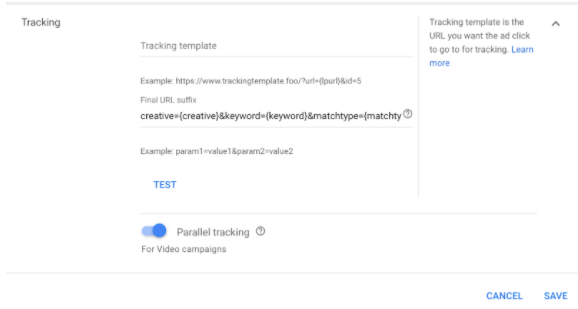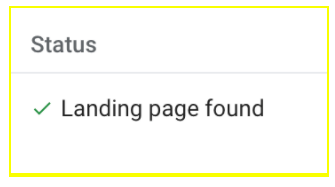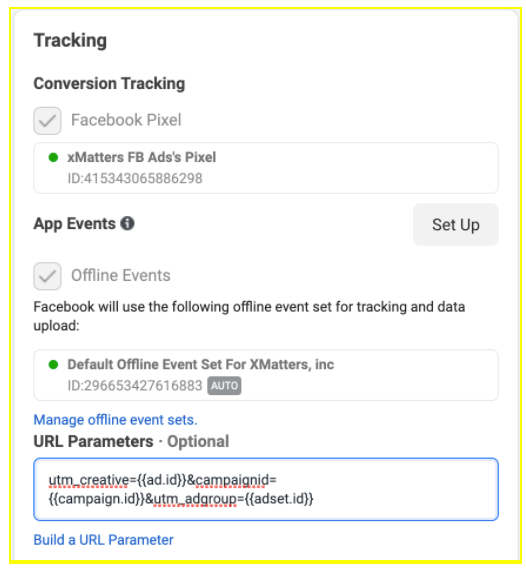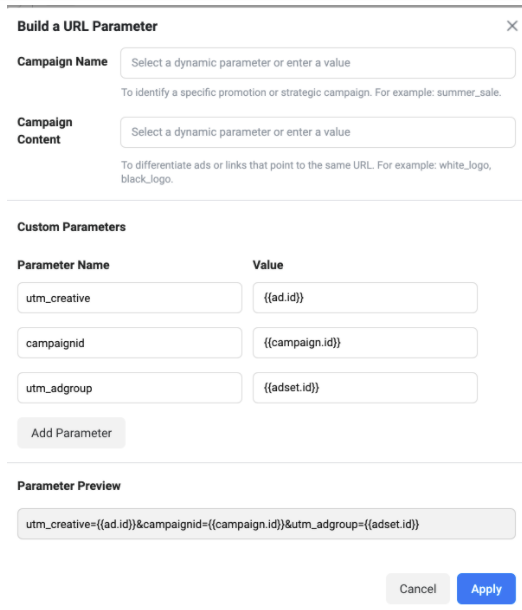
Why B2B Digital Advertisers Need a Video-First Content Strategy
For B2B digital advertisers, video is no longer optional. Instead, it should be the foundation of your full-funnel ad strategy.

Data fuels smart marketing decisions. The more insights you gather about lead generation, the more you can continue optimizing your advertising.
While it’s paramount to get a solid handle on digital ad tracking, it’s not always clear how. Even advanced marketing teams run into tracking issues. We’ve identified the five most common issues and their solutions here.
After completing your landing page, remember to send a test lead through it. Simply preview your ad, click it and complete the lead generation form.
Now do a quick check. Has your CRM system tracked the new test lead? If not, one of the following problems must be addressed:
This happens: you find 20 leads in your CRM system for the past week but if you try tracing them to the platforms that generated them you see only 10. You want to avoid these mathematical mismatches.
The solution is to add UTM parameters to your ad URLs to improve the accuracy of your tracking, reporting, and ultimately, performance. By tagging your links, you can closely monitor the correct lead volume from each channel.
When more leads come into your CRM system than the channels actually amount to, it’s likely to be an issue with your tracking pixels. Refer to #1 above for possible solutions.
The opposite issue can happen as well. That is, you find more conversions coming through the ads platform than the total that shows in your CRM system. Possible issues are:
If you’re using a CRM system, it’s easy to pull-in dynamic data points such as campaign ID, ad group ID, creative ID, keyword and more. This information can show more than basic front-end metrics, which informs you which Google ads and keywords are working best.
You can set up a Google tracking template or final URL suffix at the account, campaign, ad group and ad level. Setting it up at the account level is the easiest and quickest way. Click here to learn about the difference between tracking templates and final URL suffixes.


Here’s a list of the available parameters from Google:
| Parameter | What it returns |
| {campaignid} | The campaign ID. (Use this when you’ve set up your tracking info at account level and want to know which campaign served your ad.) |
| {adgroupid} | The ad group ID. (Use this when you’ve set up your tracking info at the account or campaign level and want to know which ad group served your ad.) |
| {feeditemid} | The ID of the extension that was clicked. |
| {targetid} | The ID of the keyword (labeled “kwd”), dynamic search ad (“dsa”) target, remarketing list target (“aud”), product partition (“pla”), or hotel group partition (“hpi”) that triggered an ad. For multiple target IDs, the output shows in the following order: “aud, dsa, kwd, pla, hpi.” For example, if you add a remarketing list to your ad group (criterion ID “456”) and target the keywords ID “123” the {targetid} would be replaced by “aud-456:kwd-123.” |
| {loc_interest_ms} | The ID of the location of interest that helped trigger the ad. See developer website for location IDs. Reported only for campaigns that show ads to people searching for your targeted locations |
| {loc_physical_ms} | The ID of the geographical location of the click. See developer website for location IDs. Reported only for campaigns that show ads to people in your targeted locations |
| {matchtype} | The match type of the keyword that triggered your ad: “e” for exact, “p” for phrase, or “b” for “broad” |
| {network} | Where the click came from: “g” for Google search, “s” for a search partner, or “d” for the Display Network |
| {device} | What device the click came from: “m” for mobile (including WAP), “t” for tablet, and “c” for computer |
| {devicemodel} | What model of phone or tablet the click came from (for example, “Apple+iPhone”). Note: only available on Display Network campaigns |
| {gclid} | The Google click identifier of a click that comes from your ad |
| {ifmobile:[value]} | Whatever you define for “[value],” if your ad’s clicked from a mobile phone |
| {ifnotmobile:[value]} | Whatever you define for “[value],” if your ad’s clicked from a computer or tablet |
| {ifsearch:[value]} | Whatever you define for “[value],” if your ad’s clicked from a site in the Google Search Network |
| {ifcontent:[value]} | Whatever you define for “[value],” if your ad’s clicked from a site in the Google Display Network |
| {creative} | A unique ID for your ad |
| {keyword} | For the Search Network: the keyword from your account that matches the search query, unless you are using a Dynamic Search ad, which returns a blank value. For the Display Network: the keyword from your account that matches the content. |
| {placement} | The content site where your ad was clicked (for keyword-targeted campaigns), or the matching placement targeting criteria for the site where your ad was clicked (for placement-targeted campaigns) |
| {target} | A placement category (works with placement-targeted campaigns only) |
| {param1} | Creative parameter #1, if you’re using the AdParamService with the Google Ads API (AdWords API) |
| {param2} | Creative parameter #2, if you’re using the AdParamService with the Google Ads API (AdWords API) |
| {random} | A random Google-generated number (an unsigned 64-bit integer), commonly used to force the page to reload |
| {adposition} | The position on the page that your ad appeared in, with a value like “1t2″(this means page 1, top, position 2) |
| {ignore} | Ignores tracking elements of your final URL to help reduce crawl load on your website. It can only be used in your final or final mobile URL. |
Similarly, you can add dynamic URL parameters in Facebook to track traffic from your ad.
According to Facebook.com, to add URL parameters to your ads on Facebook:


LinkedIn claims “Lead Gen” forms produce conversions at 2X to 3X the rate of sponsored content. While this ad type auto-populates the form fields, getting that data into your CRM is so simple.
Of course, if you don’t mind doing the extra work, you can manually download your leads from LinkedIn and upload them to your CRM system. But if you’re looking for greater efficiency, LinkedIn offers automated integrations with the following partners:
In addition to a CRM solution, your tech stack may include a marketing automation platform. In this case, you may need to set up the flow to push the leads from your marketing automation platform to your CRM (e.g. push leads from Marketo into SalesForce). Visit this LinkedIn support page for information on setting up additional marketing platform integrations.
Tracking issues are uncommon but easily solved. And of course, it’s important to get your tracking just right to gather the insights you need to perpetually improve your return on ad spend.
If you have questions I haven’t answered in this article, don’t hesitate to contact Closed Loop to resolve your tracking issues.

For B2B digital advertisers, video is no longer optional. Instead, it should be the foundation of your full-funnel ad strategy.

Master the art of negotiating media buys to maximize ROI. Discover how strategic agencies align with brand goals and build strong vendor relationships to make every marketing dollar work smarter.

The 2024 political season is gearing up to be one of the most significant in terms of advertising spend. B2B marketers must navigate this turbulent landscape with strategic precision.
© 2024 Closed Loop. All Rights Reserved.